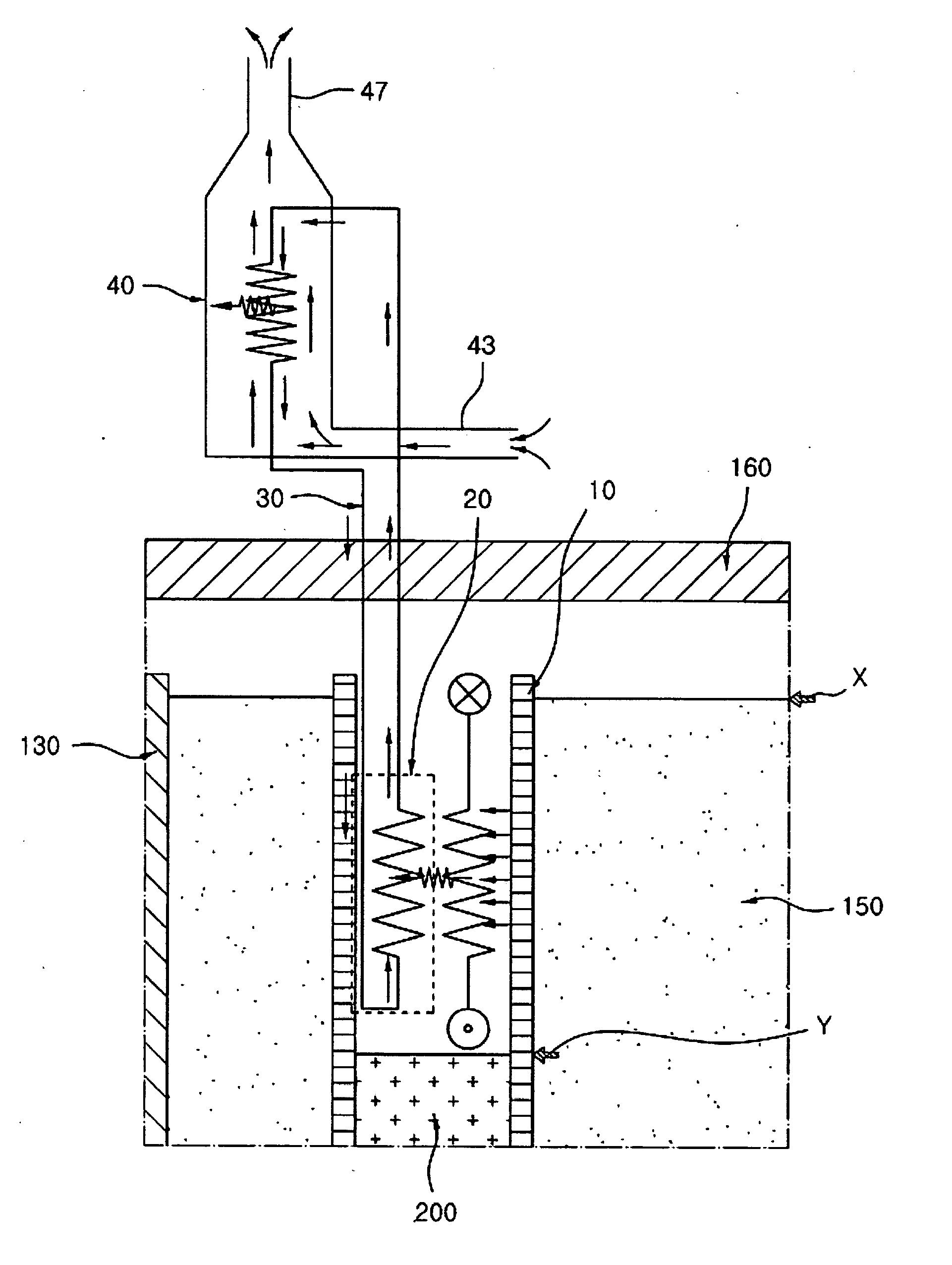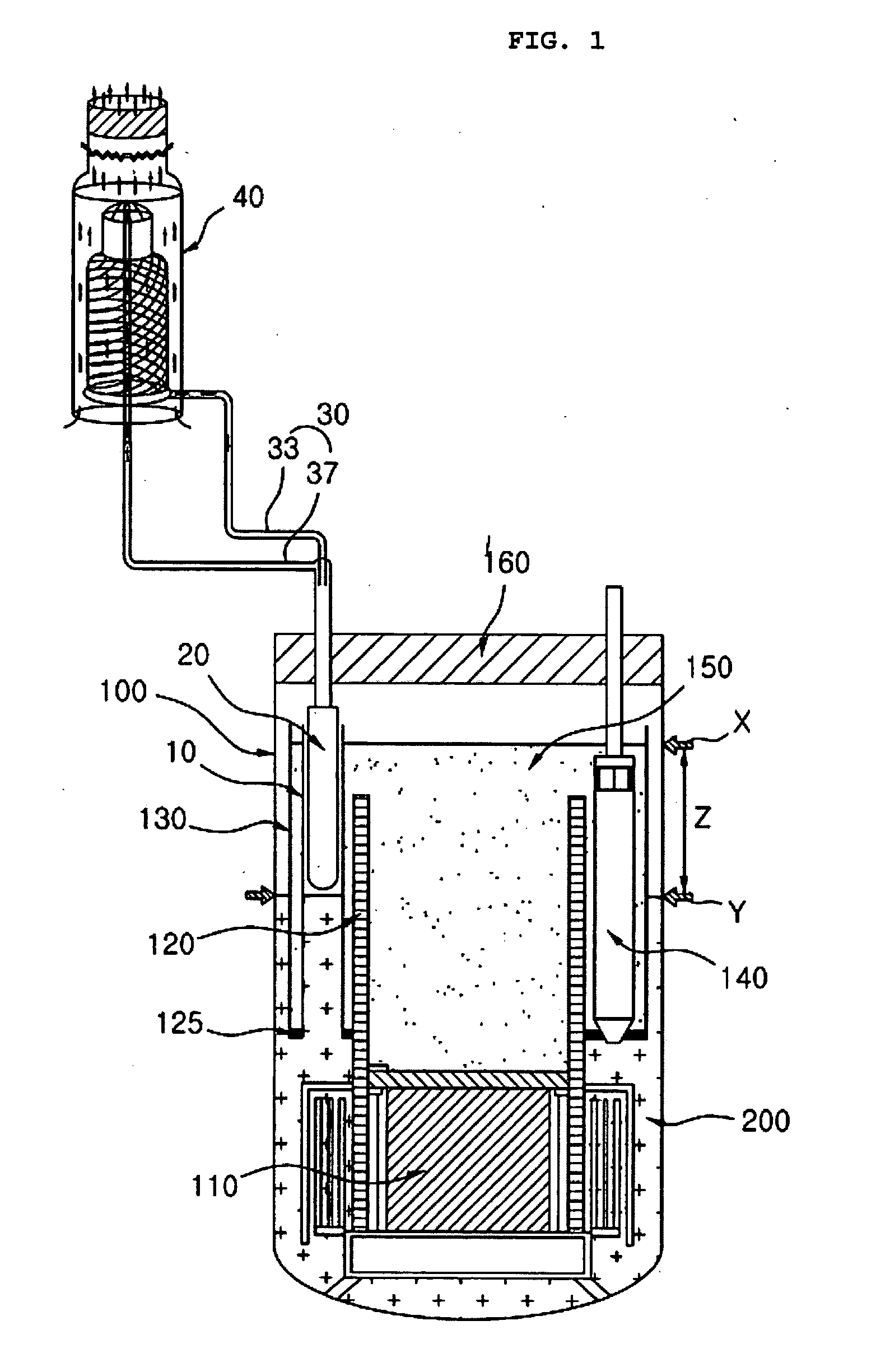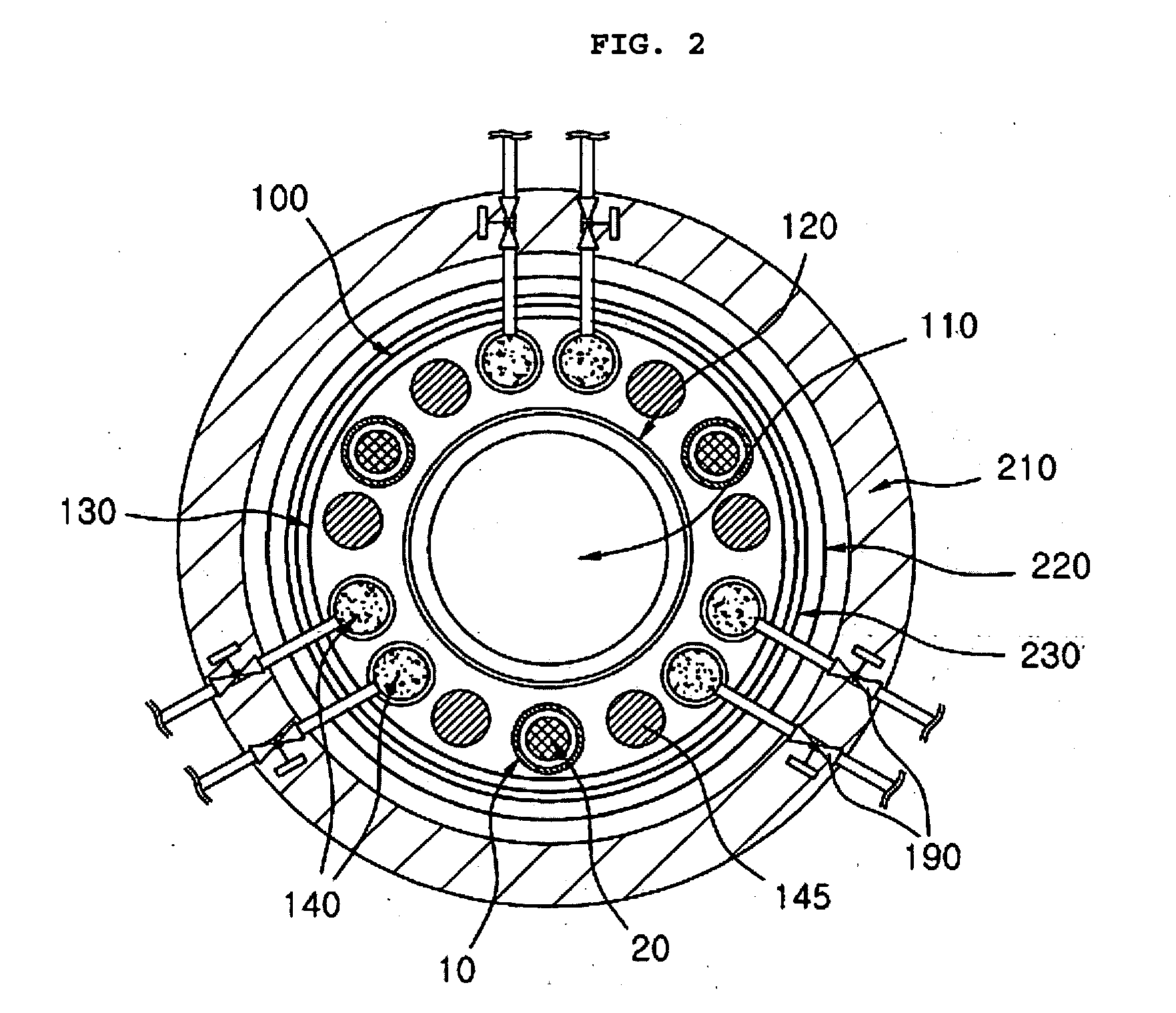Passive safety-grade decay-heat removal method and decay-heat removal system for LMR with pool direct heat cooling process
- Summary
- Abstract
- Description
- Claims
- Application Information
AI Technical Summary
Benefits of technology
Problems solved by technology
Method used
Image
Examples
Embodiment Construction
[0034] Now, a preferred embodiment of the present invention will be described in detail with reference to the accompanying drawings. In the following, the decay heat removal method and system of the present invention will be specifically described on the basis of a liquid metal reactor to which the decay heat removal system of the present invention is applied.
[0035] As shown in FIGS. 1 and 2, a liquid metal reactor, to which the decay heat removal system according to the preferred embodiment of the present invention is applied, comprises a reactor vessel 100, a reactor core 110 concentrically disposed in the lower part of the reactor vessel 100, and a cylindrical core support barrel 120 surrounding the reactor core 110 and extended upward to a predetermined height above the reactor core 110. To the cylindrical core support barrel 120 is attached a ring-shaped separating plate 125, which is vertically extended from the outer circumference of the core support barrel 120 and horizonta...
PUM
 Login to View More
Login to View More Abstract
Description
Claims
Application Information
 Login to View More
Login to View More - R&D
- Intellectual Property
- Life Sciences
- Materials
- Tech Scout
- Unparalleled Data Quality
- Higher Quality Content
- 60% Fewer Hallucinations
Browse by: Latest US Patents, China's latest patents, Technical Efficacy Thesaurus, Application Domain, Technology Topic, Popular Technical Reports.
© 2025 PatSnap. All rights reserved.Legal|Privacy policy|Modern Slavery Act Transparency Statement|Sitemap|About US| Contact US: help@patsnap.com



